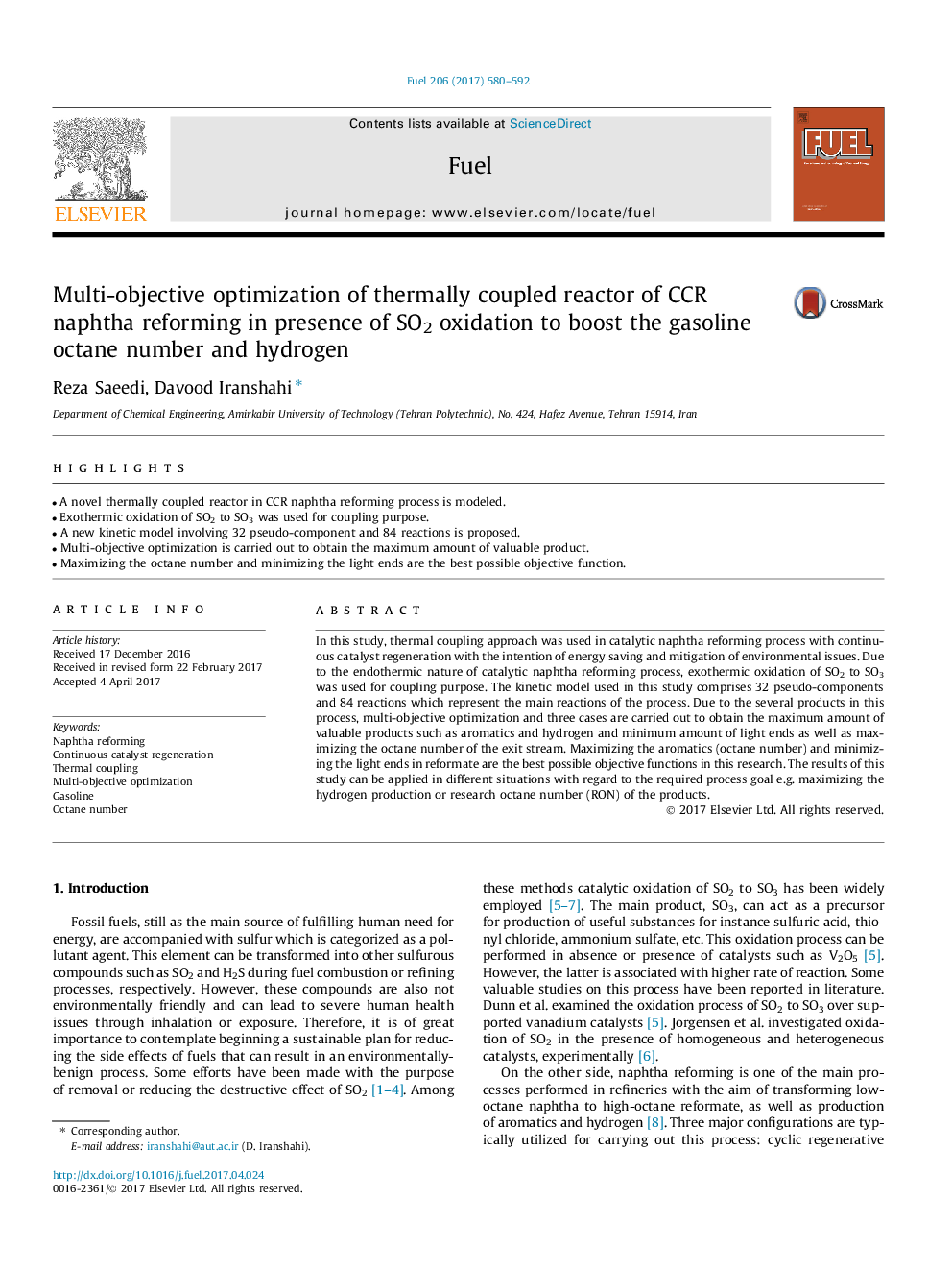| Article ID | Journal | Published Year | Pages | File Type |
|---|---|---|---|---|
| 4768602 | Fuel | 2017 | 13 Pages |
Abstract
In this study, thermal coupling approach was used in catalytic naphtha reforming process with continuous catalyst regeneration with the intention of energy saving and mitigation of environmental issues. Due to the endothermic nature of catalytic naphtha reforming process, exothermic oxidation of SO2 to SO3 was used for coupling purpose. The kinetic model used in this study comprises 32 pseudo-components and 84 reactions which represent the main reactions of the process. Due to the several products in this process, multi-objective optimization and three cases are carried out to obtain the maximum amount of valuable products such as aromatics and hydrogen and minimum amount of light ends as well as maximizing the octane number of the exit stream. Maximizing the aromatics (octane number) and minimizing the light ends in reformate are the best possible objective functions in this research. The results of this study can be applied in different situations with regard to the required process goal e.g. maximizing the hydrogen production or research octane number (RON) of the products.
Related Topics
Physical Sciences and Engineering
Chemical Engineering
Chemical Engineering (General)
Authors
Reza Saeedi, Davood Iranshahi,
